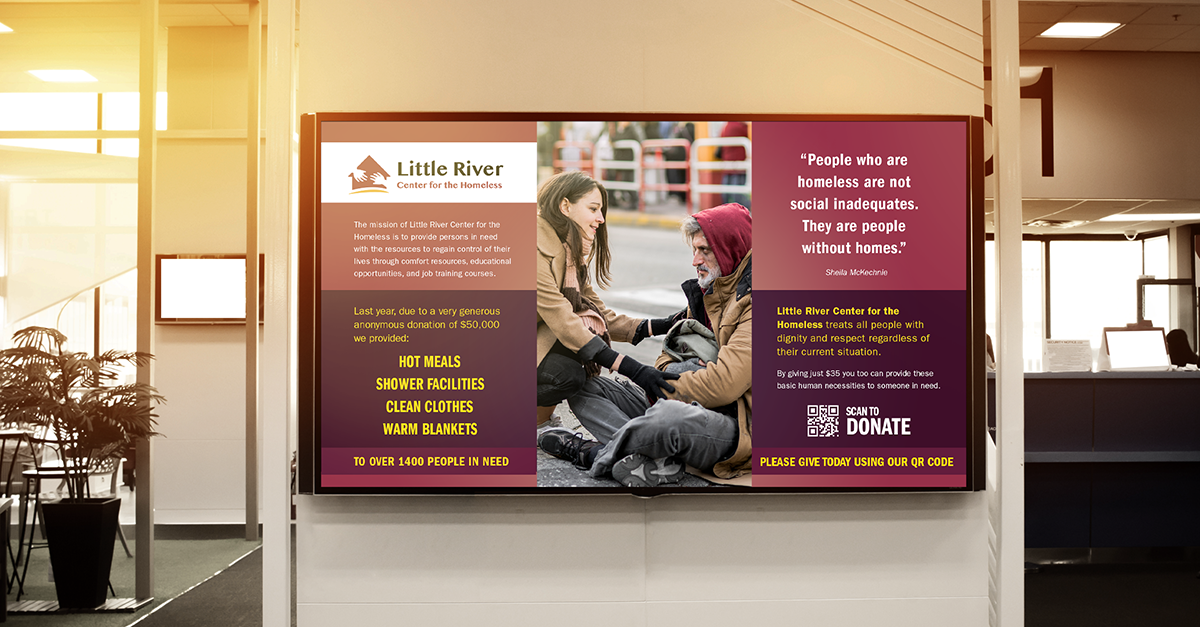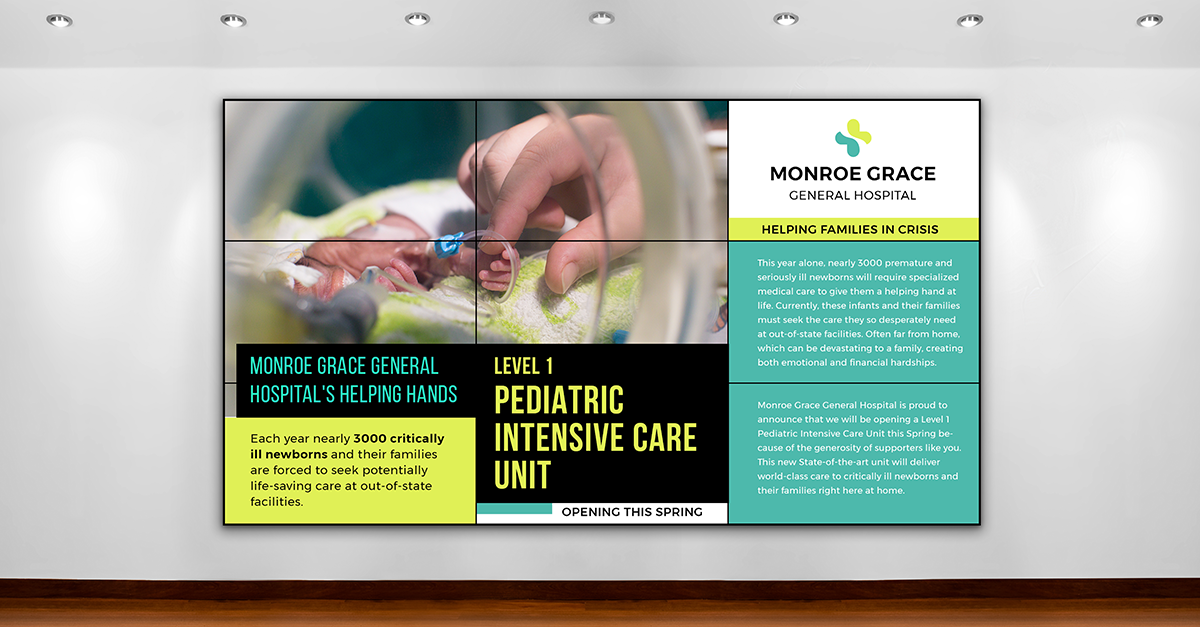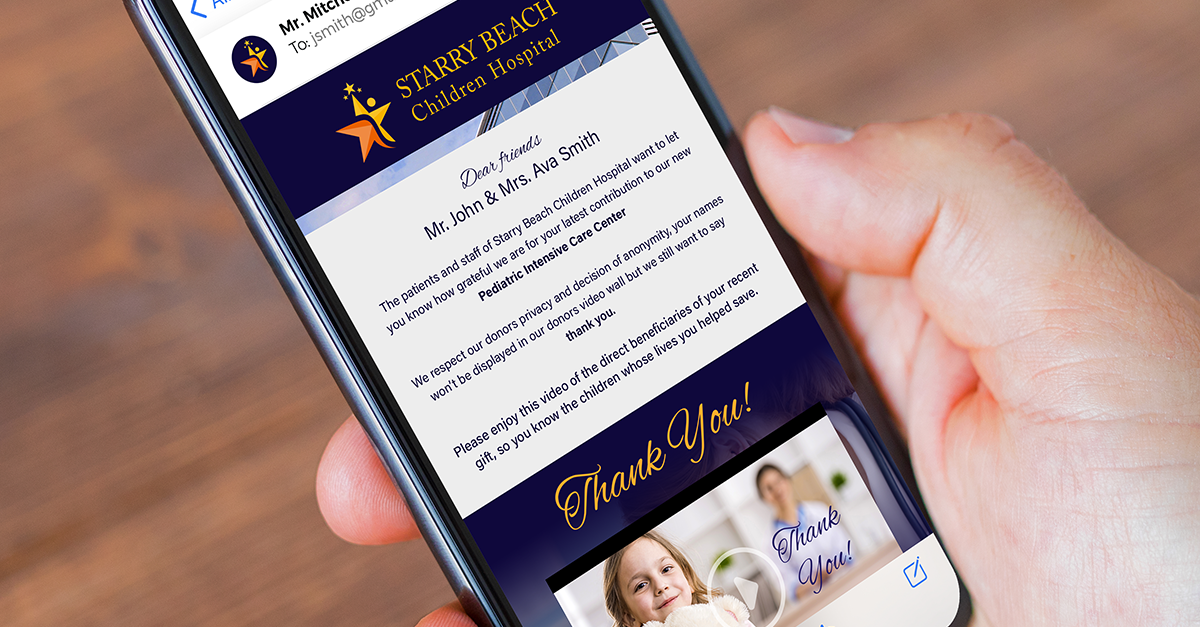- Blog
- >
- Nonprofit Storytelling: Why Showing Impact is Important
Blog

Nonprofit Storytelling: Why Showing Impact is Important
Holley Snaith / September 29, 2025
Everyone enjoys reading a good story, and every nonprofit has an impact story to tell. Sharing with your audience the impact your nonprofit has made plays a big role in your campaign impact and donor retention. Nonprofit storytelling may sound tedious and it does take thoughtful planning, but we have some helpful tips to make the process as simple and seamless as possible. Mastering this method will go far in helping to raise awareness and increase giving.
Everyone enjoys reading a good story, and every nonprofit has an impact story to tell. Sharing with your audience the impact your nonprofit has made plays a big role in your campaign impact and donor retention. Nonprofit storytelling may sound tedious and it does take thoughtful planning, but we have some helpful tips to make the process as simple and seamless as possible. Mastering this method will go far in helping to raise awareness and increase giving.
How Nonprofit Storytelling Increases Revenue
There are numerous reasons why nonprofit storytelling is important, but one of the key reasons is that it helps your nonprofit increase revenue and reach fundraising goals. Sharing real-life impact stories, especially ones that pull at the heartstrings, helps form an emotional bond and trust between you and your donors. This inspires them to continue to give and even give more.
Remember that donors would rather see too much content instead of not enough. Sharing impact through stories, videos, and testimonials using various forms of communication boosts your nonprofit’s content, helps you reach a broader audience, and recruit new donors.

Key Points to Consider When Telling Your Nonprofit's Story
Nonprofit storytelling is one of the best ways to share important facts and information about the work that your organization is doing. These shared impact stories give donors an understanding of the difference that they are making by giving to your cause, and it tells them that you value their giving.
When constructing your nonprofit’s story, consider your audience and ask the following questions:
- Who are you trying to reach?
- What are you trying to say in this story?
- Does your impact story feature a problem and offer a solution?
- What type of emotion do you want your readers to feel when they read this story?
- What communication method will you use to put it out there?
Make An Emotional Connection

While writing your nonprofit’s story, focus on making an emotional connection with your donors. Chances are, donors already feel a connection to your cause when they first give. Sharing impact stories based on real people and real events is your opportunity to capitalize on that connection and make it even stronger. Doing this will only enhance their affinity for your organization and what you are striving to do.
One way to make a strong emotional connection is by featuring real-life people who have been impacted by your cause. Include photos or videos to the story, making it more relatable and memorable to your audience in comparison to simply using text. By making this emotional connection, you are forming a relationship with donors that is built on trust.

5 Reasons To Go Digital
Learn why digital is the best option for your nonprofit from donor recognition to donor retention.
Use Different Methods of Communication
There are multiple ways to tell your story and share impact, therefore, having a solid marketing campaign and utilizing different communication methods is critical. Keep your website up to date with news and success stories, and occasionally publish a blog post highlighting a specific impact story. Frequently send out newsletters featuring impact stories as well.

Donors feel important when they receive regular emails from your nonprofit, hearing first-hand of the impact their gift has made. Posting regularly on social media is an easy way to interact with donors, and don’t forget to encourage them to share on their own social media pages as well, helping your nonprofit reach potential new donors.
Again, add photos and videos to the story to make it more relatable. For example, if your nonprofit provides recreational items for after-school programs, share photos or videos of children playing games or doing some other fun activity at their after-school program. Whichever method of communication you utilize, remember to always include a call to action.
How To Write An Impact Story
Writing an impact story is simple, but it takes some diligent work to write a good one. Let’s break down some of the key factors that go into making a solid impact story.

Be Concise
When sharing your story, make sure it is an effective, tight story that captivates the audience’s attention. There is no need to write a long, emotional story because this tends to lose the audience’s attention. Keeping it short, sweet, and powerful will ultimately do more for your nonprofit and fundraising efforts.
Be Specific
Be as specific as possible in the story that you share so you may appeal to your donor base and recruit new donors. For example, sharing a story about how your nonprofit helped a disabled veteran in Rochester, New York get back on his feet after combat is far more captivating to an audience than a story about an unnamed man who resides in the Northeast.
Highlighting your donors is another way to tell a story. If you elect to spotlight a donor, ask if they mind you sharing the amount they gave, how long they have supported your cause, and why they choose to. Also ask if you may include a photo or even a video of them. The more specific you are with the details in your nonprofit story the more relatable it will be.

Focus on Quality vs. Quantity
The age-old saying “less is more” also applies to nonprofit storytelling. Again, you don’t need to be overly dramatic in the story that you share, so avoid embellished emotional statements added only to make the story longer. For example, saying, “Every night for two months, Marie laid on the cold, hard floor sobbing for hours thinking about everything she lost in the catastrophic flood” is overdone.
But you do want the story to tell what your nonprofit did to make an impact and end it on a positive note. A better example would be, “Marie was devastated by the catastrophic flood that hit Birmingham, Alabama, but thanks to your support, she has a new roof over her head and has restored her life.”
However you decide to tell the story, make sure you stay consistent in your tone of voice. If you are generally positive and upbeat in your stories, maintain that voice. If you elect to go a more emotional route, continue to write the more poignant stories. Whatever you see is working for your nonprofit, stick with it.
Feature Data

An audience wants to see proof that their money is making an impact, so including data is critical to telling a good story. The data can either be weaved into the narrative or applied through design elements and visualization. When you do include this concrete data, tell your donors what the numbers mean, where they came from, and how their gift made an impact on the numbers.
For example, if your nonprofit has embarked on a multi-year campaign in an effort to conserve American Bald Eagles in the Eastern part of the United States, share with your donors how much was raised during the campaign and how the efforts helped in the conservation of Bald Eagles. Remember to keep the numbers simple and easy for your audience to digest.
Conclusion
There are many benefits to nonprofit storytelling, including forming strong, emotional connections with donors and ultimately increasing your revenue. To master nonprofit storytelling, take the time to formulate a story that is concise and filled with quality information that includes data. Once you have your story written and polished, execute it through a well-crafted communication plan and amaze your audience.
Interested in learning more about how OminAlly Digital Donor Walls can help you with campaign awareness and much more? Request your FREE demo here.
Did you find this blog post informative? Follow us on LinkedIn or Facebook to keep up to date!
Table of Contents

5 Reasons To Go Digital
Learn why digital is the best option for your nonprofit from donor recognition to donor retention.

5 Reasons To Go Digital
Learn why digital is the best option for your nonprofit from donor recognition to donor retention.
-1.png?width=460&height=255&name=Wright%20Museum%20Final%20(1)-1.png)
